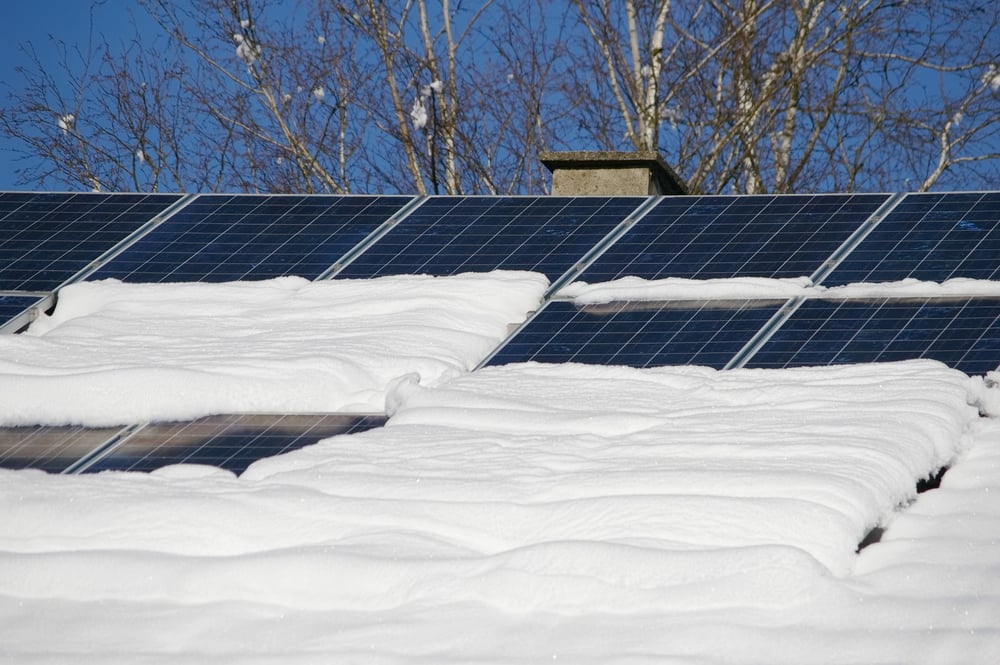
As the world pivots towards sustainable energy solutions, an increasing number of homeowners are turning to solar power to meet their energy needs. Home solar systems harness the sun’s abundant energy, providing a clean and renewable source of electricity. However, the efficiency and performance of these systems are not immune to the effects of weather. In this blog post, we will explore the dynamic relationship between weather conditions and home solar systems, delving into the ways in which sunlight, temperature, precipitation, and other meteorological factors can influence solar energy production.
The Sun’s Dance with Clouds: Impact on Solar Irradiance
The primary source of energy for solar panels is, of course, sunlight. Sunlight reaches the Earth’s surface as solar irradiance, a measure of the power per unit area received from the sun. Cloud cover, a prominent feature of weather patterns, can significantly affect solar irradiance.
Clear Skies and Optimal Conditions: On a clear day, with minimal cloud cover, solar panels receive the maximum amount of sunlight. This results in higher solar irradiance and, consequently, increased energy production.
Cloudy Days and Diffused Light: Clouds act as natural diffusers, scattering sunlight and reducing the direct intensity reaching solar panels. While energy production is not completely halted on cloudy days, it is notably lower compared to sunny conditions.
Variable Conditions: The intermittent nature of cloud cover throughout the day introduces fluctuations in solar energy production. This variability requires solar systems to adapt dynamically to changing light conditions.
Temperature’s Dual Role: Efficiency and Durability
Temperature is a crucial factor influencing the efficiency and longevity of solar panels. While sunlight is essential for energy production, extreme temperatures can impact the performance of solar systems.
Optimal Operating Temperature: Solar panels operate most efficiently at moderate temperatures. In fact, solar cells are more effective in converting sunlight to electricity in cooler conditions, making winter months potentially more productive than scorching summer days.
Heat-Related Efficiency Loss: Prolonged exposure to high temperatures can lead to efficiency losses in solar panels. This is due to the decrease in the voltage of the solar cells, leading to a reduction in overall energy output.
Thermal Cycling and Long-Term Durability: Solar panels are designed to withstand thermal cycling – the process of heating and cooling during day and night cycles. However, extreme temperature fluctuations can impact the long-term durability of solar panels, emphasizing the importance of choosing panels designed for specific climate conditions.
Rain, Snow, and the Challenge of Precipitation
While solar panels are designed to withstand various weather conditions, precipitation poses unique challenges to solar energy production.
Rain’s Temporary Impact: Rain itself has a minimal direct impact on solar panels, as they are designed to shed water and continue functioning during light rain. However, heavy rain, coupled with cloud cover, can reduce energy production.
Snow’s Blanket Effect: Snow accumulation on solar panels presents a more significant challenge. A layer of snow can obstruct sunlight, preventing panels from generating electricity. However, many solar installations are designed with tilting mechanisms or coatings to facilitate snow shedding.
Innovations in Snow Management: Ongoing research and technological advancements are focused on developing effective solutions to manage snow on solar panels, ensuring uninterrupted energy production even in snowy climates.
Storms and Extreme Weather Events: Preparedness and Resilience
Extreme weather events, such as storms, hurricanes, and tornadoes, can pose a threat to solar installations. However, proper design, installation, and maintenance practices can enhance the resilience of solar systems.
Wind Resistance and Structural Integrity: Solar panels are designed to withstand certain wind speeds, but extreme gusts can potentially damage or displace them. Proper installation and secure mounting are essential for ensuring the structural integrity of solar arrays during storms.
Emergency Shut-Down Protocols: Advanced solar systems often incorporate safety features, including emergency shut-down protocols, to protect both the solar panels and the property in the event of severe weather conditions.
Impact on Grid Connectivity: Extreme weather events can disrupt the electrical grid, affecting the ability of solar-powered homes to remain connected. However, the integration of energy storage solutions, such as batteries, can provide homeowners with a backup power source during grid outages.
The Role of Smart Technology in Weather Adaptation
As the solar industry advances, smart technology is playing an increasingly vital role in optimizing energy production based on real-time weather conditions.
Weather Forecast Integration: Solar systems equipped with weather forecasting capabilities can anticipate changes in sunlight and adjust their operations accordingly. This proactive approach ensures optimal energy capture under varying weather scenarios.
Machine Learning and Predictive Analytics: Machine learning algorithms and predictive analytics enable solar systems to learn and adapt to local weather patterns over time. This adaptive intelligence enhances the efficiency of solar energy production by optimizing system parameters.
Remote Monitoring and Maintenance: Remote monitoring systems allow homeowners and solar service providers to keep a close eye on system performance. In the event of adverse weather conditions or technical issues, timely intervention can minimize downtime and ensure consistent energy production.
Conclusion:
In the intricate dance between weather and home solar systems, understanding the impact of meteorological factors is essential for maximizing energy production and ensuring the long-term reliability of solar installations. As technology continues to evolve, innovations in design, materials, and smart solutions are contributing to the resilience of solar systems across diverse climates. Homeowners embracing solar energy can navigate the ebb and flow of weather conditions, confident in the knowledge that their sustainable choice remains a viable and efficient source of power, even in the face of nature’s unpredictability.
